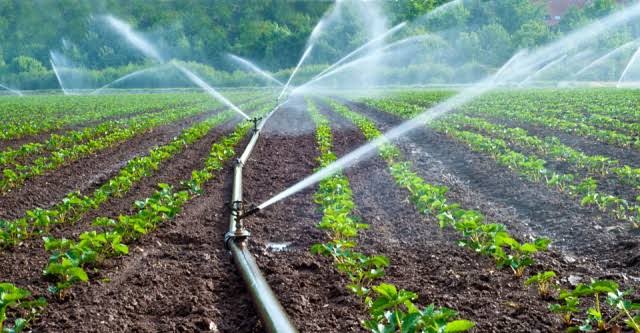Agriculture plays an important role in India’s economy. More than half of the country’s population depends on agriculture or any related work. Only agriculture contributes 17 percent to the country’s GVA i.e. gross value added. Seeds and fertilizers cannot show their full potential if the water is not obtained properly.
According to global regulations, if the per capita water is less than 1700 cubic meters, then it is believed that there is a situation of water stress. On the other hand, if the per capita water level is less than 1000 cubic meters, then it is believed that there is a shortage of water. In India, this figure is 1544 cubic meters, that is, the position of water stress here.
The recently held ‘Times Water Summit’ was organized in association with Mantena Construction. There was talk about water structure in this. If we talk about the water situation in India, then India receives about 4000 billion cubic meters of rain every year. However, 48 percent of it is used. About 40 percent of urban India’s demand is met by groundwater. The most important issue of concern is the fall in rainfall of 2-3 meters every year.
The biggest reason for the increasing water problem in India is that the measures to store water here are not being done properly and also the management of water is not right. Because of this, only about 18 to 20 percent of water is used. In the last four decades, 84 percent of the water used for irrigation has been extracted from the ground. The demand for groundwater is constantly increasing.
For example, Bihar often gets flooded and drought. Right now 12 districts of North Bihar are facing floods. There are about 15 districts of Bihar where the groundwater level is continuously going down, including some districts of North Bihar. This has also happened because there has been less rainfall in Bihar in the last 4-5 years. Out of 534 administrative blocks in Bihar, 280 were declared drought-prone in 2018. Another example is the case of Odisha. It receives about 1500 mm of rainfall every year. However, every summer some parts of the state become drought-prone.
• Nutrients are given through the system, not directly into the ground, as it also wastes a lot of nutrients.
• Water is used much better because only water is given where it is needed.
• Water wells can be used to conserve water.
• Leakage of water into the ground reduces due to micro-irrigation.
• There is also a very low need for maintenance.
• The saved water can be used for the next crop.
• The land is not permanently surrounded by irrigation.
The Foods That Can Hinder Your Immune System
Talking about the canal irrigation system, it has many disadvantages:
• A lot of lands is covered in it. Evaporation of water causes loss of water, which reduces the efficiency of water.
• Water does not reach everywhere equally.
• There is a loss of cultivated land.
• A lot of water leaks into the ground.
According to the Economic Survey of 2019-20, micro-irrigation has been suggested for sustainable agriculture practice. This technique has great importance in farming like Paddy, Wheat, Potato, Onion. With this help, farmers are able to save 20-48 percent of irrigation water. Energy efficiency has increased from 10% to 17%. Labor cost savings have increased from 30% to 40%. Crop production has also increased from 20 percent to 38 percent. According to the survey, if compared to the traditional method of irrigation, micro-irrigation can lead to the irrigation of additional areas with the same amount of water.
Micro-irrigation also ensures that it can irrigate water-deficient land, barren land, and additional land. Irrigation will benefit both farmers and the economy in this way.













